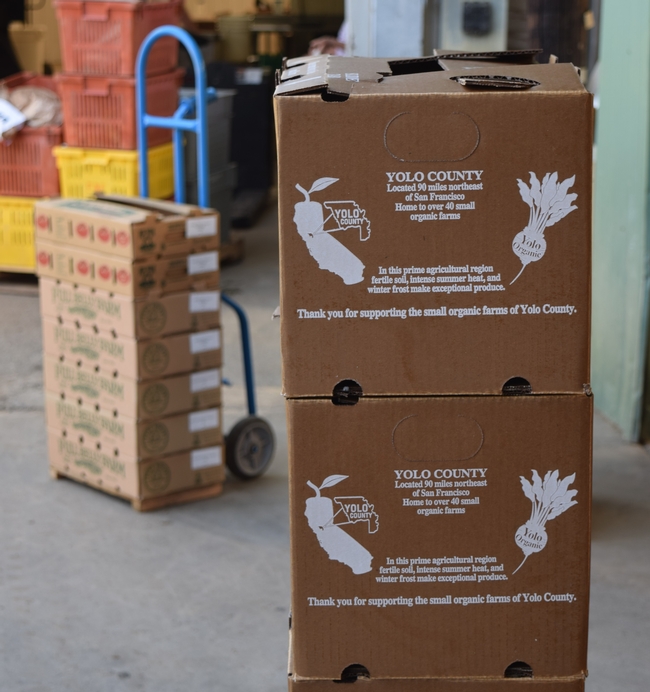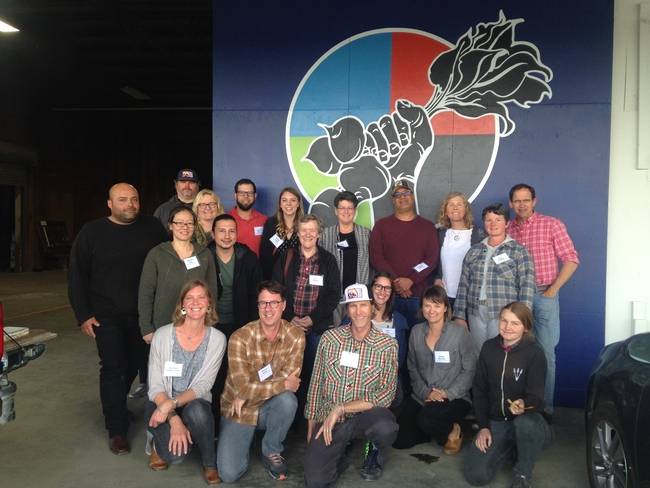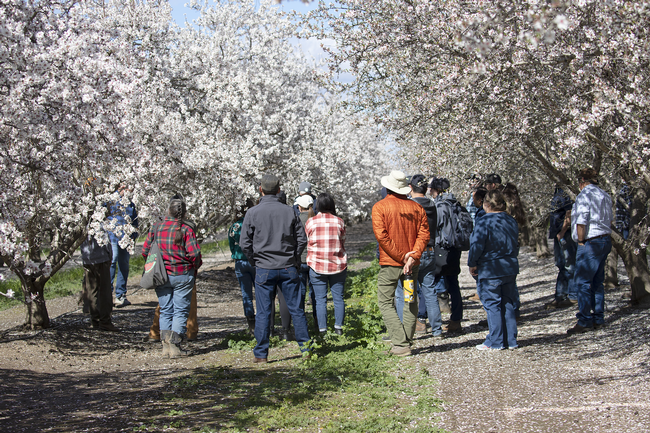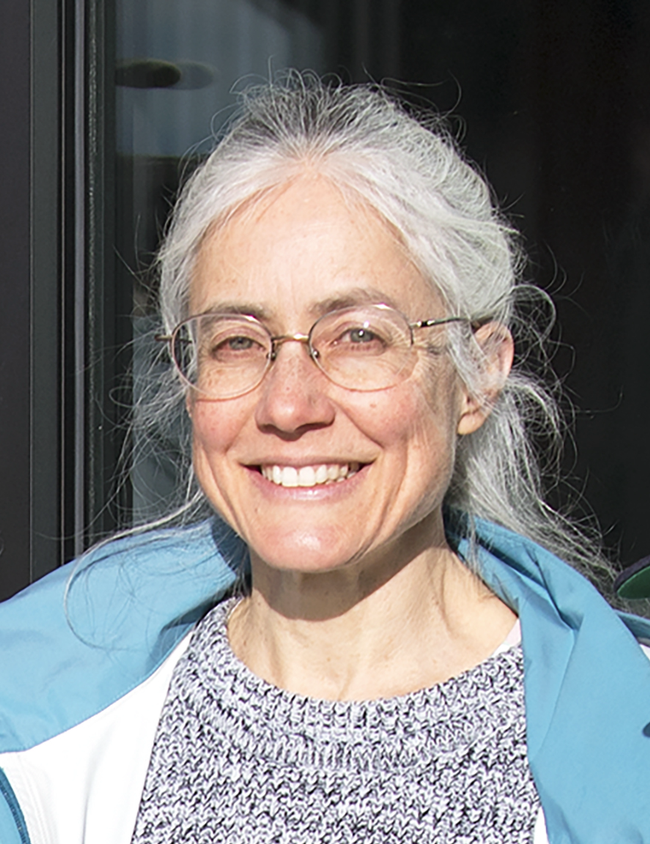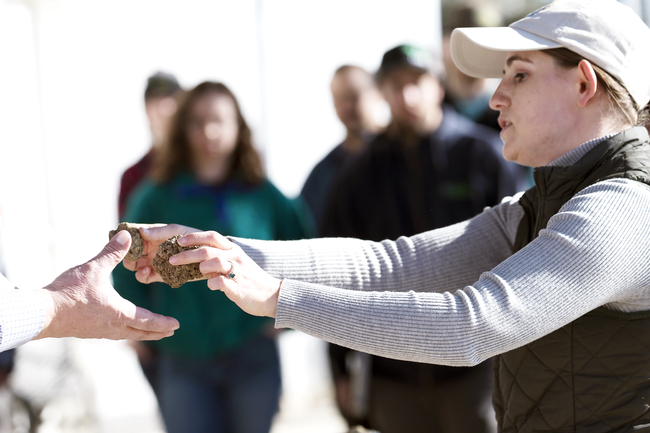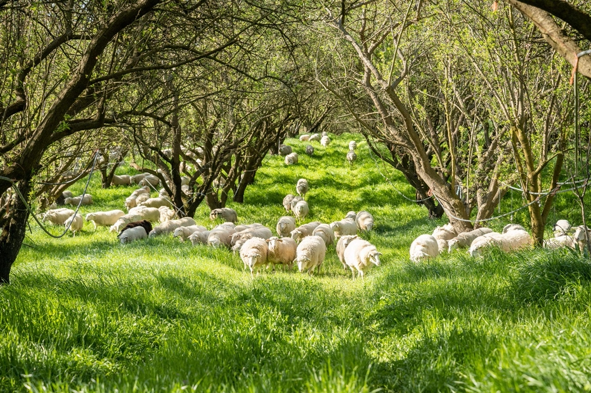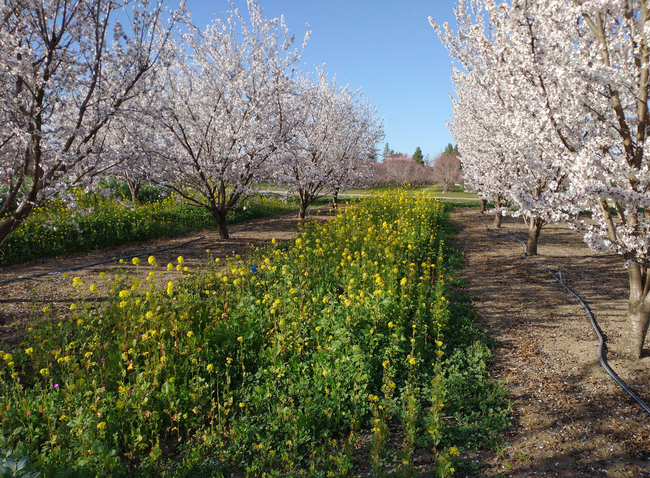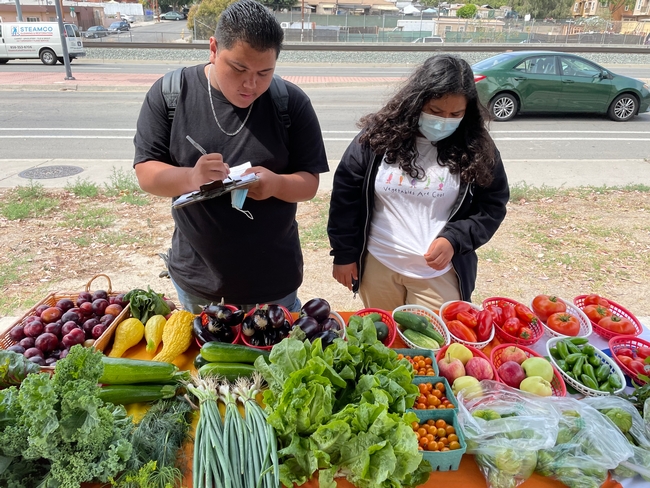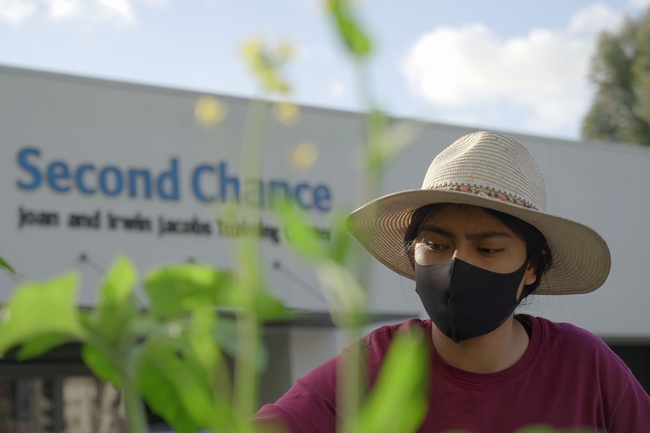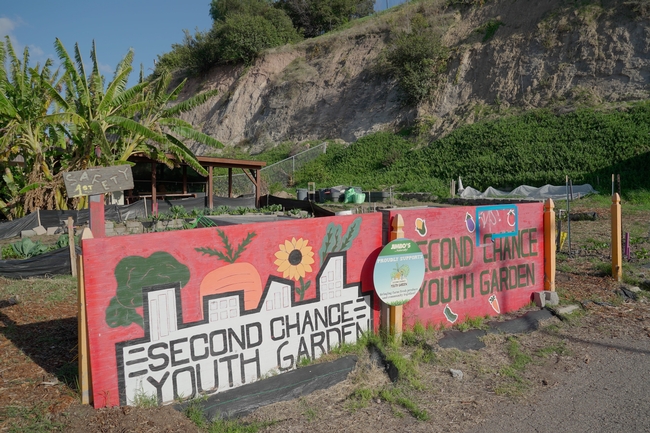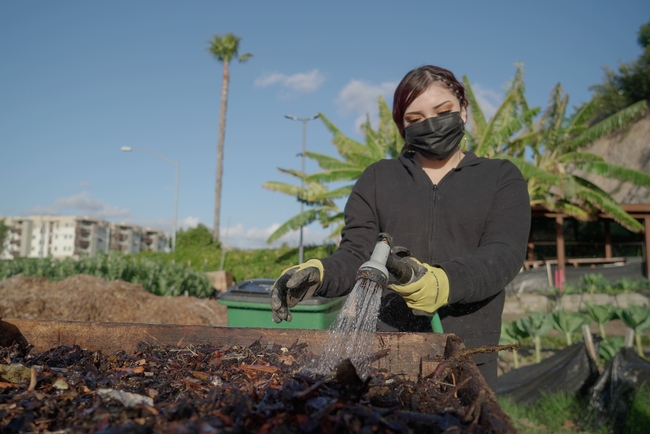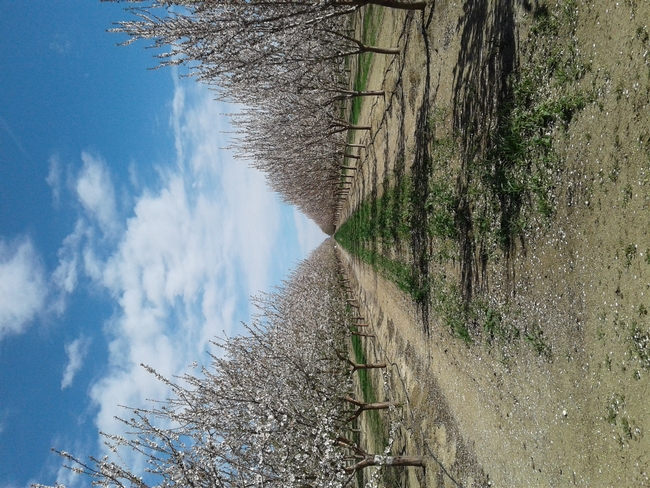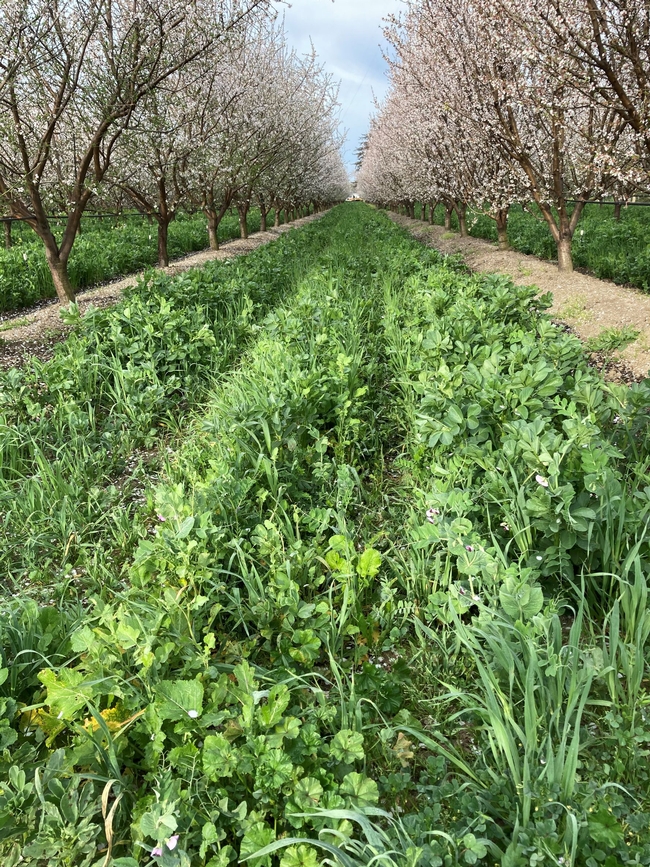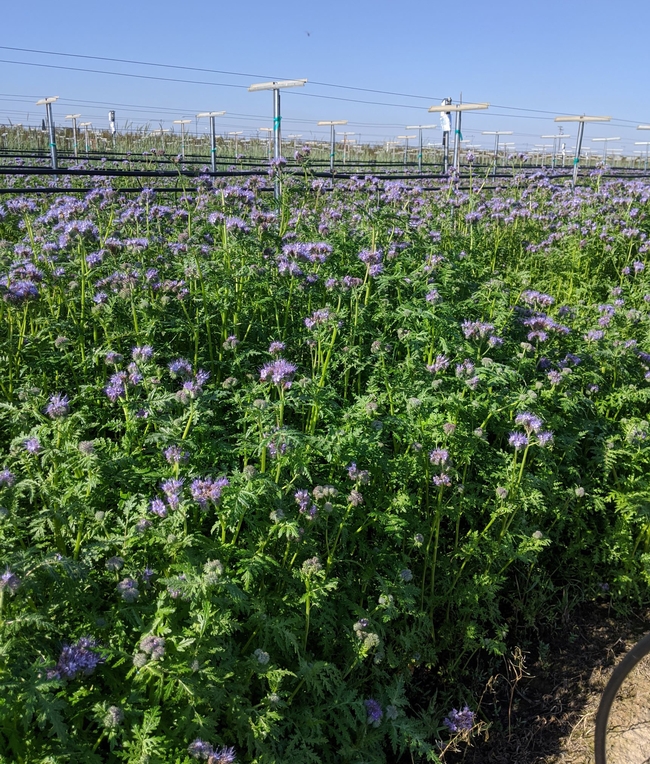Posts Tagged: Sustainable Agriculture Research
Winter season: A time for food safety systems re-evaluation and education for food hubs
The holiday meal season is often a busy time for food hubs – entities that handle the aggregation, distribution and/or marketing of source-identified regional food – as restaurants, retailers and consumers fill their tables and shelves with an abundance of fresh, local products. However, the subsequent winter months can provide a valuable time for reflection and re-evaluation of a food hub's systems and processes. In this spirit, it may be helpful to remind people working at food hubs that University of California Sustainable Agriculture Research and Education Program (UC SAREP) offers a suite of food-safety resources – in English and in Spanish – on its website.
- A step-by-step guide for food hubs on how to pursue a third-party food safety audit with guidance on how to navigate buyers' questions.
- Two sample food-safety plans intended as a starting point to be adapted to a food hub's specific operations and practices.
- Example standard operating procedure, or SOP, documents related to 11 common tasks carried out by food hubs.
“We hope these resources can play a role in helping food hubs to adopt best practices and control risks related to food safety,” says Gwenael Engelskirchen, sustainable food and farming coordinator with UC SAREP, who led the development of these educational tools.
According to the Centers for Disease Control and Prevention, approximately, 1 in 6 Americans (or 48 million people) gets sick and 3,000 die of foodborne diseases annually. In 2011, to help prevent the occurrence of foodborne illness, the federal government enacted the Food Safety Modernization Act (FSMA), designed to outline actions to be taken at various points along the supply chain for both human and animal food.
UC SAREP's Food Safety Resources for Food Hubs are intended to help food hubs navigate these food-safety regulations and accompanying best practices. Resources are also available in Spanish at Recursos de seguridad alimentaria para los centros de distribución de alimentos.
Food safety certification guide
Some buyers verify a supplier's food safety program by requiring an audit performed by a third-party certification body or auditing company. This Guide to Food Safety Certification offers key considerations before deciding to pursue a food safety audit and helps users navigate the food safety certification process.
Food safety plan
Food hubs that meet the criteria for full compliance with FSMA's Preventive Controls for Human Food Rule are required to have a food-safety plan in place. And for all food hubs, having a shared document describing the facility's operations and how potential risks of food contamination are managed is a good idea. Two sample food safety plans, inspired by the operations of food hubs in California, provide a starting point and can be adapted to a hub's own operations.
Standard operating procedures
Standard operating procedures provide detailed step-by-step instructions for how to carry out operational tasks within a food facility. The standard operating procedure samples cover common topics such as handwashing, facility cleaning and more, and are intended to be adapted to a food hub's specific operations and practices.
Jacob Weiss from Spork Food Hub in Davis said, “the templates were a great starting place for us to build the framework of our food safety plan. It helped us figure out what we needed to (and didn't) need to include. I think the SOPs are also really useful because they are broad enough to get you started but flexible enough to add the specific practices of your business or hub.”
For additional information, visit UC SAREP's webpages on Food Safety Resources for Food Hubs or Recursos de seguridad alimentaria para los centros de distribución de alimentos.
These resources and tools were developed in collaboration with various project partners, including Department of Food Science and Technology at UC Davis, Department of Population Health and Reproduction at UC Davis School of Veterinary Medicine, Center for Precision Medicine and Data Science at UC Davis Health, and Community Alliance with Family Farmers.
UC awards Brodt $2M to advance soil health, climate-smart farming practices
Regional farms will demonstrate practices such as cover cropping, reduced tillage, compost and mulch use, hedgerow planting, optimized irrigation systems
To accelerate adoption of climate-smart farming practices, the University of California Office of the President has awarded nearly $2 million to a team of UC Cooperative Extension scientists and community partners working on a network of farm demonstration sites. The project will be led by Sonja Brodt, coordinator for agriculture and environment at the UC Sustainable Agriculture Research & Education Program. This UC Agriculture and Natural Resources project is one of 38 funded with $83.1 million allocated to UC by the State of California for climate action research and innovation.
Scaling up soil health and other climate-smart agricultural practices to sequester carbon, increase water and nutrient use efficiency, and improve the resilience of farms to climate-related threats like drought and floods is a core pillar identified in California's Natural and Working Lands Climate Smart Strategy.
Climate-smart agriculture is a systems-based approach that requires localized adaptation across the diverse soils, cropping systems, socioeconomic and cultural contexts throughout California.
“Our project will strengthen the nascent California Farm Demonstration Network for on-the-ground, regionally specific demonstration of a range of climate-smart practices,” said Brodt. “Regional farms will demonstrate practices such as cover cropping, reduced tillage, compost and mulch use, hedgerow planting, irrigation system optimization and more.”
The $1,999,524 project will pilot a participatory partnership extension model that allows farmers to learn from their peers to reduce adoption risks and adapt knowledge to an ever-changing environment, increasing the likelihood of farmer success and accelerating long-term uptake of complex, place-specific practices.
Building on the capacity of local trusted organizations, project collaborators will be organized in a hub-and-spoke network with three regional Farm Demonstration Hubs (Sacramento Valley, North Coast and Central Coast), a pilot Hmong/Mien Demonstration Hub, and a statewide Organic Demonstration Hub.
Collaborators at each hub will be responsible for identifying and nurturing farm demonstration sites, and conducting demonstration trials and farmer-to-farmer outreach activities. Centralized organization and capacity building will be provided by UC SAREP, UC Organic Agriculture Institute, the California Association of Resource Conservation Districts, the Community Alliance with Family Farmers, and the California Farm Demonstration Network Advisory Panel.
In addition to several UC Cooperative Extension advisors and specialists across the state, partners include the UC Hansen Research and Extension Center and the Rodale Institute California Organic Center, both in Ventura County, and the UC Climate Smart Agriculture Program. Eight Resource Conservation Districts will also be involved in leading Farm Demonstration Hubs.
The project will also conduct soil health assessment activities to inform soil health and resilience monitoring protocols in future research and extension efforts. Since many existing soil health metrics were designed for agroecosystems in the Midwest and Eastern U.S., this project aims to lay the groundwork for research to adapt soil health metrics to the arid and Mediterranean climates of California.
“By utilizing relationships built between demonstration hub managers and demonstration farms across different cropping systems, we will gather quantitative and qualitative soil health data, information about growers' management practices as well as their own perspectives of what they really need to know about their soils in order to better manage for climate resilience and mitigation,” said Brodt.
Ultimately, the project partners aim to establish an enduring on-farm extension and research system that will help thousands of farmers adopt climate-smart practices tailored to their farms.
Other grant-supported projects focus on water access, conservation
The largest of the Climate Action Matching Grants, an $8.2 million investment, supports the development of planning tools to advance sustainable, inclusive and equitable water distribution for California's 39 million people. The project is led by Ted Grantham, a UC Cooperative Extension specialist in the Department of Environmental Science, Policy and Management at UC Berkeley. Kristin Dobbin, UC Cooperative Extension specialist in the Department of Environmental Science, Policy, and Management at UC Berkeley, and Erik Porse, director of the California Institute for Water Resources are collaborating on the project.
Three other projects involving UC ANR researchers received California Climate Action Seed Grants and Matching Grants subawards:
- Development of a hydrogel that can work as a soil amendment to help small-scale vegetable farms conserve water led by UC San Diego associate professor Shengqiang Cai with Ruth Dahlquist-Willard, UC Cooperative Extension small farms advisor and interim director of UC SAREP; Mallika Nocco, UC Cooperative Extension specialist; and Matthew Gilbert, UC Davis professor of whole plant physiology. $297,979
- Development of a tool for predicting climate-water variation led by UC Irvine professor Isabella Velicogna with Tapan Pathak, UC Cooperative Extension specialist. $199,531
- A study of urban stream corridors led by UC Davis professor Gregory Pasternack with Igor Lacan, UC Cooperative Extension environmental horticulture and urban forestry advisor. $33,824
- A study of how California's housing crisis affects the growth of the wildland urban interface (WUI), where the fringes of development reach into natural areas led by UC Santa Cruz professor Miriam Greenberg, with Barb Satink Wolfson, UCCE fire advisor, Devii Rao, UCCE livestock and natural resources advisor, and the Central Coast Prescribed Burn Association.
Updated 8/31/23 to add the wildland urban interface study.
Growers invited to see benefits of cover crops in orchards, vineyards
Searchable database of growers experienced in growing cover crops launched
Growers are invited to tour orchards and vineyards and hear from other growers about their experiences with cover crops.
UC Sustainable Agriculture Research and Education Program, UC Cooperative Extension, the Napa Resource Conservation District, and the Community Alliance with Family Farmers have created a searchable database of orchard and vineyard growers experienced in growing cover crops that will help other growers bring the benefits of the practice to their operations.
“The tours are part of a project for which we recently unveiled new tools for orchard and vineyard growers to learn about cover cropping from experienced growers,” said Sonja Brodt, associate director of the UC Sustainable Agriculture Research and Education Program.
The database describes cover cropping strategies, details of field practices, benefits and challenges experienced by cover crop growers in orchards and vineyards in the southern Sacramento Valley (including the Capay Valley) and the North Coast viticulture region. The cover crop grower database is available at https://sarep.ucdavis.edu/covercropsdb.
Feb. 8, 1-5 p.m., Capay Valley tour:
The tour will visit three organic farms in the Capay Valley that are integrating cover crops and grazing in their orchard and vineyard systems. Topics of discussion will include:
- Strategies for integrating cover crops into orchards and vineyards
- Impacts of cover cropping and grazing on soil health
- Funding and information resources for growing cover crops
Speakers will include:
- Rory Crowley, Director of Habitat Programs, Project Apis m.
- Amélie Gaudin, Associate Professor, Department of Plant Sciences, UC Davis, Endowed Chair in Agroecology
- Hope Zabronsky, Climate-Smart Agriculture Program lead, UC Agriculture and Natural Resources
To register for the Feb. 8 tour, visit https://sarep.ucdavis.edu/events/grazing-cover-crops-orchards-and-vineyards-capay-valley-tour.
March 8, 1-4 p.m., Arbuckle area tour:
The tour will visit two conventional farms in the Arbuckle area that are integrating cover crops into their orchard and vineyard systems.
Topics of discussion will include:
- Strategies for integrating cover crops into orchards and vineyards
- Impacts of cover cropping on soil and water balance
- Frost risk protection and prevention
- Funding resources for growing cover crops
Speakers will include:
- Rory Crowley, Director of Habitat Programs, Project Apis m.
- Kosana Suvocarev, UC Cooperative Extension Specialist in Biometeorology, UC Davis Department of Land, Air, and Water Resources
- Hope Zabronsky, Climate-Smart Agriculture Program lead, UC Agriculture and Natural Resources
To register for the March 8 tour, visit https://sarep.ucdavis.edu/events/cover-cropping-conventional-orchards-and-vineyards-arbuckle-area-tour
Youth-run garden provides 10,000 pounds of produce for San Diego families
UC SAREP's Sustainable Agriculture and Food Systems grant helps support Second Chance garden
Fifteen-year-old Xavier knows the anger within him will never leave. “I can't ever get rid of it,” he said.
“I've always wanted to just fight for no reason; I just had an anger issue, losing my temper quick with people,” added Xavier, a ninth-grader in San Diego County. “I have high expectations of myself.”
Xavier is working to keep his emotions under control, and he has found a sense of calm through his volunteer work. He was an intern – and then a peer supervisor – in the youth-run garden of Second Chance, a San Diego-based organization that works to break the cycles of poverty and incarceration by providing housing and job training to adults and young people.
Operating their garden as a small farm business, youth in the program, ages 14 to 21, offer produce to the community through their farm stand and a CSA (Community Supported Agriculture) model.
“The project incorporates a ‘farm to fork' approach in which youth not only experience how to grow food, but how to cook and eat healthfully,” said Gail Feenstra, director of the University of California Sustainable Agriculture Research and Education Program, which has a grant program that funds research and education projects – such as the youth garden – supporting sustainable food systems.
“Second Chance works primarily with youth in communities of color, providing them with training and also helping them develop confidence in themselves,” Feenstra said.
Filling a critical need for fresh produce
Caelli Wright, program manager of the Second Chance youth garden, said that grant funds from SAREP – a program of UC Agriculture and Natural Resources – have been used to purchase the supplies needed to sustain the program. The garden has filled a critical need for produce during the COVID-19 pandemic.
“After the pandemic hit, we recognized the increased need for fresh food in our neighborhoods,” Wright said. “That need was already there – southeast San Diego is considered a ‘food swamp' or ‘food apartheid', if you will – and with the onset of COVID, that need just escalated with unemployment and complications in our food production systems.”
Through a partnership with UC San Diego Center for Community Health and Encanto Elementary School (located down the block from the garden), donations enabled the program to give its CSA shares to about 25 families at Encanto. Over the course of the pandemic, the youth have grown 10,000 pounds of produce to donate.
At the same time, the program helps the young participants grow. For Xavier, being outdoors with peers empowered him to develop positive relationships. Previously, as a student in a charter school program, he was not accustomed to interacting with people and groups. Volunteering in the youth garden has given him a fresh perspective and understanding of others.
“Learning to be patient with people and [to] accept sometimes that if I don't know something, I need to ask about it, because I used to be so in my ego that I thought I knew everything,” Xavier explained. “But I don't know everything – I just learned to accept some things…that's just being part of life. And that's something that the garden has helped me with, personally.”
Opportunities for personal, social growth
Developing – and redeveloping – social skills are especially important for students, as they return from the disconnections associated with remote learning.
“Right now, with a lot of students facing the aftermath of COVID and being restricted to learning at home and not getting as much social interaction in their daily lives, it's led to a lot of challenges, mental health-wise, and social and emotional learning-wise,” Wright said. “The garden program provides that opportunity that some youth have been missing out on.”
In southeast San Diego, such crucial opportunities for personal growth and career exploration are harder to come by, and Second Chance started the garden in 2012 to give youth a unique work experience and valuable skills. About 400 young people have participated in the program.
“The youth that we serve are coming from low-income neighborhoods that are underserved with resources,” Wright said. “They just are not exposed to the same opportunities [as those in higher-income areas] to build skills or be ready for the workforce or to reach higher education – so that's where our program comes in and helps deliver those needed services.”
Xavier, who originally came to the garden because he heard that landscaping could be a lucrative career, recently finished his second stint as a peer supervisor in the youth garden. With his new skills, he and his cousin are looking to start a business of their own, cutting grass and doing yardwork in their community.
And, late last month, Xavier transferred to a more traditional high school environment.
“Being in a charter school after two, three years,” he said, “I've realized I miss being around more people.”
Can California native plants be used as cover crops to benefit farmers and native ecosystems?
In late February, in an almond orchard in the Sacramento Valley, the fall-planted cover crop mix of grasses, brassicas and legumes had barely produced a green fuzz above the soil surface, and it was unclear when it would bloom. Unfortunately, this scene is becoming more frequent across California, as climate change causes more prolonged droughts and rain-dependent winter cover crops can barely grow, which delays or reduces bloom, essential for supporting pollinators. Fortunately, California native plant species have evolved with drought and have developed many strategies to survive and reproduce in those conditions.
Would it be possible to capitalize on the over 9 million acres of cropland in California for drought resilience and habitat restoration by utilizing more native species as cover crops? Our team at the UC Sustainable Agriculture Research and Education Program (UC SAREP) spent some time considering various native plant species and their potential ecological and operational attributes as cover crops. For a full list of species and their attributes, see https://ucanr.edu/sites/covercrops/.
Many native species are so well adapted to drought that they will still germinate and bloom during extremely dry years, for example, annuals like Tidy Tips (Layia platyglossa) and California poppy (Eschscholzia californica). Alternatively, perennial bulb species like Prettyface (Triteleia ixioides) and Bluedicks (Dipteronstemon capitatus) become dormant during the dry summer, retaining their bulbs below ground and re-growing when the rains return. These species could perhaps fit well in no-till orchard systems. Summer dormancy is important for tree nut growers because they usually need clean ground under the trees during harvest. Moreover, the costs to terminate and reseed would potentially be eliminated. While these species are well-known by Native Americans for their edible bulbs, at this point in time, we are not aware of any cover cropping trials having ever been conducted with these species.
Another species with strong reseeding and more availability is the annual Lacy Phacelia (Phacelia tanacetifolia), which offers an intriguing historical precedent for developing a native species for cover cropping purposes. Native to California, it was introduced into Europe in 1832 by Germans. It is very attractive to pollinators and experienced a boom there in the early 1990s. European beekeepers and farmers have been using Lacy Phacelia as a cover crop ever since, and it has recently been gaining traction on California farms as well. California has many species of phacelia, with another, described as being even more attractive to native bees, being the annual Great Valley Phacelia (Phacelia ciliata). Besides supporting native bees, other native plant species can contribute nitrogen to the soil, such as annual Lupine (Lupinus spp.) and perennial Deerweed (Acmispon glaber), which are legumes and form an association with nitrogen-fixing bacteria in their roots.
Cover crops are not usually considered marketable crops. However, we should not preclude the potential for some plants that are useful as cover crops to provide a harvestable product as well. Native perennial fiber plants such as Indian hemp dogbane (Apocynum cannabinum), narrow leaf milkweed (Asclepsias fascicularis), and common nettle (Urtica dioica) could offer the opportunity to cultivate summer cover crops that have a market value, especially in cases where farmers are already willing to irrigate their cover crops to improve their development and amplify the benefits. Bowles Farming in the San Joaquin Valley is experimenting with growing these three species for fiber production. All three also attract native bees and important butterfly species such as monarchs (as long as farmers avoid spraying insecticides).
While we believe that some native species could open new opportunities for farmers as cover crops, we still have insufficient studies testing the effects and viability of these species. Organizations like the NRCS Plant Materials Center at Lockeford and the Xerces Society are conducting practical studies with native species, creating plant guides and working with farmers to expand their use. In addition, researchers Lauren Hale of the USDA Agricultural Research Service and Anil Shrestha of California State University, Fresno, are using a 2021 UC SAREP small grant to study the effects of native species mixes on water demand and weed populations in San Joaquin Valley grape vineyards. Hale suggests that below-ground ecosystems may benefit as much from native plants as above-ground ecosystems. Says Hale, “Because plants and their microbiomes have evolved together for millennia, it seems logical that native plants would promote a good response from the native soil microbiota.”
For additional information:
UC SAREP List of California Native Species for Potential Use as Cover Crops: https://ucanr.edu/sites/covercrops/
Xerces Society lists of pollinator-friendly native species for California: https://xerces.org/pollinator-resource-center/california
NRCS California Plant Materials Center plant guides: https://www.nrcs.usda.gov/wps/portal/nrcs/publications/plantmaterials/pmc/west/capmc/pub/
UC SAREP Cover Crops Database: https://sarep.ucdavis.edu/covercrop

